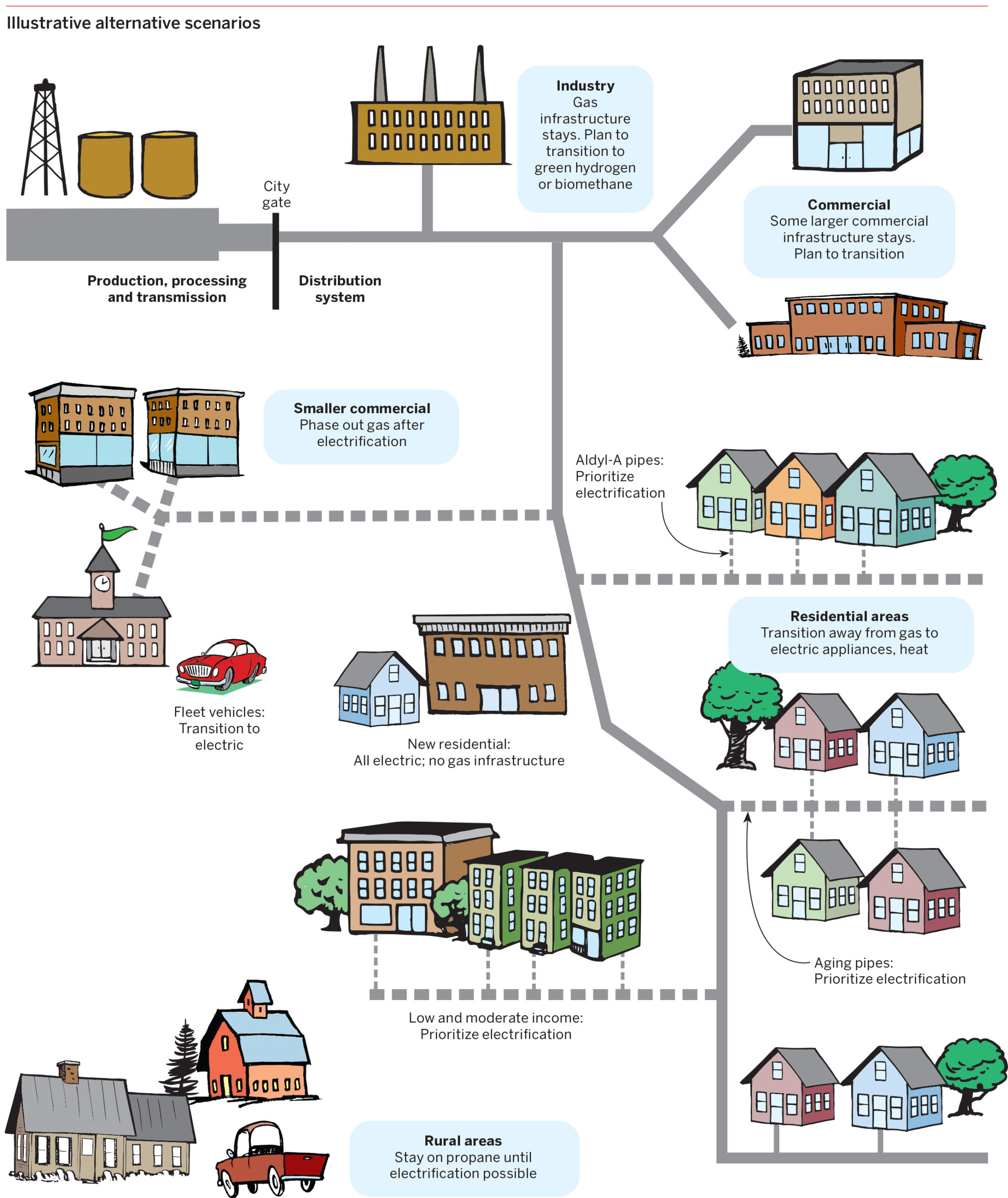America’s favorite fictional salesman of propane and propane accessories, Hank Hill, may have said it best: “When you plan ahead, then when things happen, you’re prepared.”
Changes in the energy sector have big ramifications for the way utilities serve the current 70 million residential and 3.5 million commercial and industrial consumers of fossil gas in the United States. Gas appliances and building shells have both become more efficient, meaning that gas usage per customer is on the decline — consumption in the residential sector has been roughly flat since 1970. At the same time, consumers can now choose electric alternatives that can meet their needs more safely, effectively and efficiently than their gas counterparts.
The ambitious greenhouse gas reduction targets set by the U.S. government and many states simply aren’t compatible with current levels of fossil gas usage in the long term, and consumers are increasingly aware of indoor air quality concerns stemming from the use of gas appliances. Alternative gases, such as green hydrogen and biogas, may be the right choice for some hard-to-electrify needs, such as certain industrial uses or heavy transport, but for many residential and commercial customers there are easier and immediately available options.
Given all these trends, will remaining consumers really benefit most if the status quo for the fossil gas distribution system is maintained — especially as many parts of it get older (distribution pipes in some areas more than 100 years old) and require more and costlier maintenance? One risk of a status-quo approach is that it may impose higher costs on relatively fewer customers — in particular, those who can least afford increases in their gas bills.
How can policymakers be better prepared for the changes that will continue to affect the fossil gas system in the years and decades to come? By taking Hank’s advice and planning ahead!
We need a refreshed approach to planning, robust and data-driven, that will allow utilities and regulators to better anticipate how the energy transition will affect gas usage over time — and that will ensure that customers’ energy needs are served most cost-effectively. Our recent paper, Under Pressure: Gas Utility Regulation for a Time of Transition, organizes policy recommendations into three main areas. First on the list is revitalized planning (followed by enhancements to electrification and efficiency programs and reforms to ratemaking, which we’ll tackle in later blog posts).
A revitalized approach to gas utility planning, designed to anticipate the differing needs of a fast-changing system, could look like this:
- Regulators can establish a shared context among themselves, utilities and other stakeholders — ensuring that planning processes are grounded in a solid foundation of robust and transparent stakeholder input, relevant policies and goals, and (as much as possible) coordination with related planning processes, such as those undertaken by electric utilities, air quality regulators or other state agencies.
- Gas utilities can develop a system map — showing not just the geography of the physical gas system and its customer base, but a resource that consists of layers of system information that can be considered together to reveal system challenges and opportunities. By assessing existing infrastructure, analyzing demand (current and anticipated) and supply (current and potential future risks), gas utilities can develop new approaches to meeting end-use needs at least cost and least risk to customers.
- Utilities can then explore alternative scenarios so they can compare the pros and cons of various options for meeting demand, taking into account changing circumstances of the fossil gas transition. These scenarios may consider varying demand and supply levels, as well as alternative solutions for rural customers, areas with high industrial demand, and other specific cases. They may identify areas where district energy systems could be an efficient alternative to traditional service, or where all-electric building requirements make traditional service less cost-effective to maintain.

- Regulators can require utilities to model these scenarios for reliability, safety, cost, carbon impact, risk (including the risk of stranded assets) and reliability.
- Regulators can ask utilities to consider transition planning as a layer of their overarching plans, going beyond alternative scenarios to consider new options for meeting end uses, the future of gas infrastructure, and use of financial tools to ease the way.
- Based on the above work, regulators can require two outputs of a gas transition plan: a short-term action plan (covering the next three to five years), and a long-term view of the utility’s system.
We often say that planning is a “no-regrets” tool, and that’s definitely the case here. We can’t fully predict the future, but we can move to meet it. Well-structured planning for the fossil gas system offers utilities and regulators a chance to foresee challenges, manage risks, and avoid unnecessary costs being imposed on customers.
